|
Vietnamese people are proud of their
traditional attire, an Ao dai with a turban, not unlike the
Japanese with their kimono and the French with their smart suit. The combo
of Ao dai
and turban make the wearer look
serious and elegant and it is usually worn at festivals and
ceremonies.
It is
interesting that the attire of Ao dai and turban is common for both
women and men. The Ao dai for woman usually clings tightly to the
wearer’s body with its flaps separated at the waist, while the Ao
dai
for man always hangs loosely. The turban for woman is worn high on the
head while the turban for man is worn lower.
|
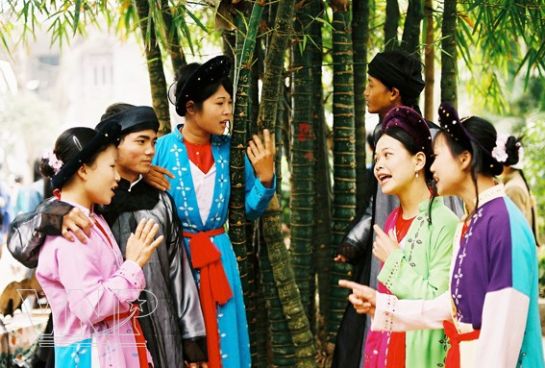
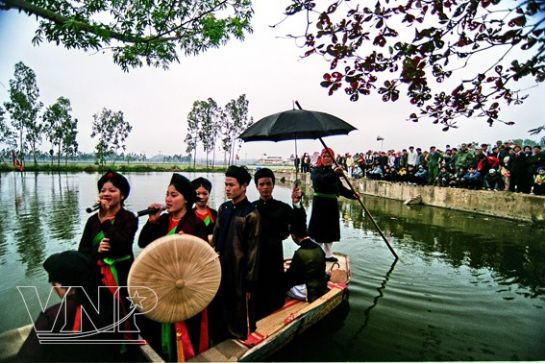
The Ao dai and turbans are
indispensable during festive days.
|
|
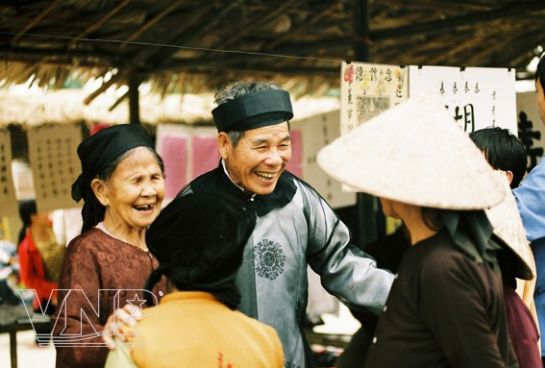
The elders like to wear Ao dai and
turban to go to Tet market.
|
|
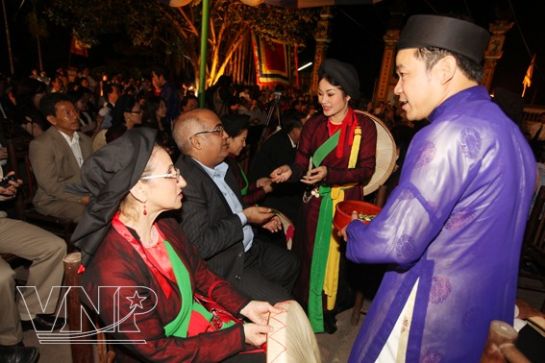
The Ao dai and turbans always go
along with the Quan ho (love duet) song
“Inviting the
guests with a quid of betel” from Bac Ninh Province.
|
|
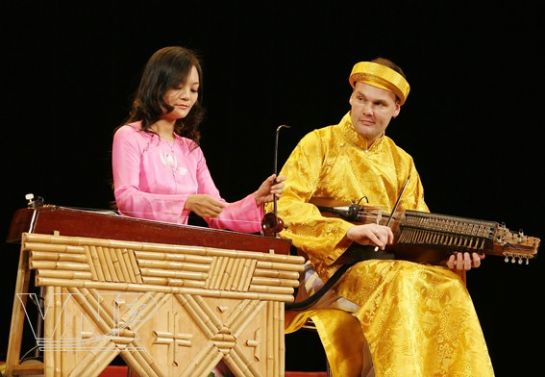
Wearing Ao dai and turban when
performing traditional music.
|
|
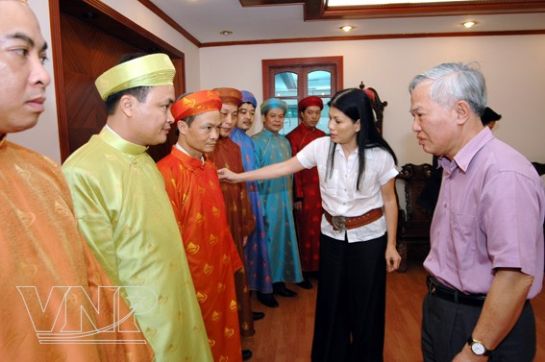
Checking the quality of the attire,
including Ao dai and turban,
for the Heads of States to
wear during APEC 14 held in Hanoi in 2006.
|
|

A scholar wearing Ao dai and turban
to write calligraphic letters at Tet
is very familiar to many
people.
|
|
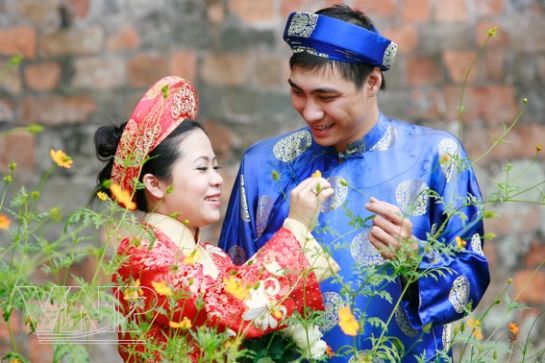
A newly-wed couple wearing Ao
dai and turbans on their wedding
day.
|
Since long ago
the Ao dai and turban have been attached to the life of people in
both rural areas and cities. Normally when there were important events in
a village, men and women had to wear the Ao dai and turban to be
permitted into the communal house. Woman wore an Ao dai made of
flower patterned material and a turban made of embroidered silk while man
wore an Ao dai made of crape and a black turban. The Ao dai
and turban worn by the elders and senior people were red in colour and
printed with the Chinese calligraphic script “longevity”. The attire for
children is green, red or yellow, very eye-catching and beautiful. It was,
and for some people still is customary to wear this attire to important
events, such as a death anniversary, wedding ceremony, village’s festival
and Tet (New Year Festival).
Today the Ao
dai and turban are used mostly by women. In the rural areas,
especially the areas that still retain old customs, the local people
usually wear the Ao dai and turban during ceremonies. In the
cities, some young newly weds like to wear the Ao dai and turban for their wedding
ceremony to show traditional Vietnamese solemnity and recall the old
customs.
Foreign visitors
to Vietnam are very interested in the Ao dai. In the ancient town
of Hoi An, Quang Nam Province there are tailor shops specializing in
making the Ao dai and turbans to meet the demands of visitors’.
Many foreign visitors like to wear the Ao dai and turban when they
attend the festivals in the north. At Festival Hue foreign artists also
select the Ao dai and turban to wear during their
performances. Many western girls who visit Vietnam buy this attire as a
souvenir.
Being an
authentic dress of Vietnam, the Ao dai and
turban was selected as the attire for the Heads of States during the
closing ceremony of the APEC Meeting held in 2006 in Hanoi.
nbsp;
Over time, the
traditional attire of Ao dai and turban has been preserved. In the
minds of the Vietnamese, the Ao dai and turban is the national
attire.
Story: Thanh Hoa
Photos: Tat Son –
Hoang Ha – Files |